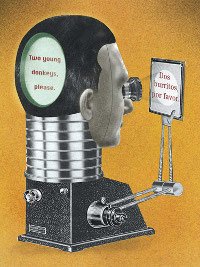How to compare source and target text in CAT Tools? Thread poster: Ahmet ÇINAR
|
|---|
I got the source text and the target text.(I did not translate them with CAT Tools. They are provided me by the client.) How can I compare them in the context of proof-reading?
Thanks in advance.
| | | | Samuel Murray 
Netherlands
Local time: 01:14
Member (2006)
English to Afrikaans
+ ...
thetranslatum wrote:
I got the source text and the target text. (I did not translate them with CAT Tools. They are provided me by the client.) How can I compare them in the context of proof-reading?
Align them with an aligner that can save the file as a table, e.g. PlusTools.
https://www.wordfast.net/wiki/PlusTools
| | | | neilmac
Spain
Local time: 01:14
Spanish to English
+ ...
| Samuel Murray 
Netherlands
Local time: 01:14
Member (2006)
English to Afrikaans
+ ...
neilmac wrote:
Microsoft Word has a "document compare" function.
The OP has the source text and the target text... (-: so that won't help.
| | |
|
|
|
Susan Welsh 
United States
Local time: 19:14
Russian to English
+ ...
I always find alignment (per Samuel's post) troublesome and in need of adjustments to make it come out right. I sometimes do it, but my usual method is the following;
I put the source file into my CAT tool (OmegaT), so that it opens one segment at a time and leverages my glossaries. Then I open the target file in Word, and edit there, flipping back and forth from Word to CAT to check (if it's revision, which is bilingual) or in case of something that makes no sense in the target lan... See more I always find alignment (per Samuel's post) troublesome and in need of adjustments to make it come out right. I sometimes do it, but my usual method is the following;
I put the source file into my CAT tool (OmegaT), so that it opens one segment at a time and leverages my glossaries. Then I open the target file in Word, and edit there, flipping back and forth from Word to CAT to check (if it's revision, which is bilingual) or in case of something that makes no sense in the target language (if it's proofreading, which is monolingual). I don't enter any translation into the CAT tool unless I see that something is a 100% match with other segments in the document. In that case, I enter the edited translation from Word into CAT, which means that it will appear in the editing window of the CAT the next time that identical segment appears. That ensures consistency of translation for those sentences, so that if I change what the translator wrote, I can change it the same way throughout. ▲ Collapse
| | | | Heinrich Pesch 
Finland
Local time: 02:14
Member (2003)
Finnish to German
+ ...
| Table in Word? | Feb 12, 2018 |
Perhaps I would create a table of both files in Word with the paragraph mark as delimiter. Then you can copy the target table to the right of the source table and compare them one paragraph at the time. I believe this could be more easy than trying to use full stops as delimiter, as most aligning software does.
| | | | neilmac
Spain
Local time: 01:14
Spanish to English
+ ...
Samuel Murray wrote: neilmac wrote:
Microsoft Word has a "document compare" function. The OP has the source text and the target text... (-: so that won't help.
Excuse my ignorance. I didn't understand the question (in fact, I still don't).
| | | | Samuel Murray 
Netherlands
Local time: 01:14
Member (2006)
English to Afrikaans
+ ...
| Re: alignment | Feb 12, 2018 |
Susan Welsh wrote:
I always find alignment (per Samuel's post) troublesome and in need of adjustments to make it come out right.
The ease of alignment also depends on the alignment tool (and the languages).
OmegaT has a built-in aligner, for example, but it is cumbersome to use. And it can't export a table (only a TM), and you can't save an alignment halfway through.
Heinrich Pesch wrote:
I would create a table of both files in Word with the paragraph mark as delimiter.
This is essentially what PlusTools does. If you tell PlusTools "these files have been segmented", then PlusTools aligns them by paragraph mark. If you don't, PlusTools attempts to split by sentence. This usually results in a misaligned table, but PlusTools' keyboard shortcuts make it quite simple to fix the alignment in a jiffy. I regularly use PlusTools when proofreading translated DOC files.
neilmac wrote:
I didn't understand the question (in fact, I still don't).
Neither do I (-: so I'm waiting for his response.
[Edited at 2018-02-12 23:04 GMT]
| | | | To report site rules violations or get help, contact a site moderator: You can also contact site staff by submitting a support request » How to compare source and target text in CAT Tools? | TM-Town | Manage your TMs and Terms ... and boost your translation business
Are you ready for something fresh in the industry? TM-Town is a unique new site for you -- the freelance translator -- to store, manage and share translation memories (TMs) and glossaries...and potentially meet new clients on the basis of your prior work.
More info » |
| | CafeTran Espresso | You've never met a CAT tool this clever!
Translate faster & easier, using a sophisticated CAT tool built by a translator / developer.
Accept jobs from clients who use Trados, MemoQ, Wordfast & major CAT tools.
Download and start using CafeTran Espresso -- for free
Buy now! » |
|
| | | | X Sign in to your ProZ.com account... | | | | | |








